Cisco Wireless Proxy Mobile IPv6 Configuration Guide
Available Languages
Contents
Introduction
Why Proxy Mobile IPv6 (PMIPv6)?
PMIPv6/S2a is standardized way of integrating trusted non-3GPP access networks with a standardized 3GPP Evolved Packet Core (EPC). In this case, “trusted non-3GPP access networks” = SP WiFi.
PMIPv6 enables IP mobility for a host without requiring its participation in any mobility-related signaling. The network is responsible for managing IP mobility on behalf of the host. The mobility entities in the network are responsible for tracking the movements of the host and initiating the required mobility signaling on its behalf.
PMIPv6 is used for intersystem and inter- Vendor handovers between 3GPP and non-3GPP radio access technologies, such as WiMAX, 3GPP, 3GPP2 and WLAN.
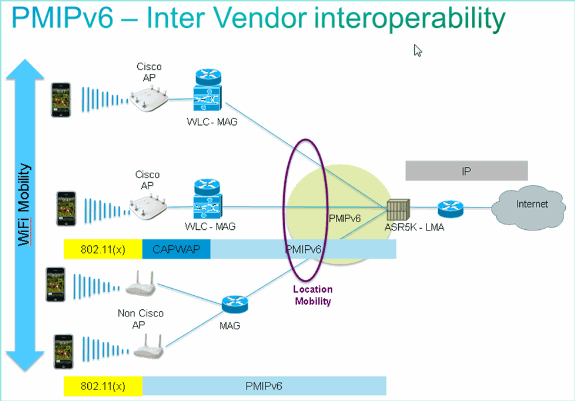
PMIPv6 facilitates IP mobility by keeping these mobility parameters constant throughout the PMIPv6 domain:
-
MN’s IP address
-
MN’s Gateway IP address
-
MN’s Gateway MAC
-
DHCP Server address
PMIPv6 Terminologies:
-
Proxy Mobile IPv6 Domain—A network where the mobility management of a mobile node is handled using the PMIPv6 protocol. The domain consists of network entities, such as MAG and LMA, between which Proxy Binding can be maintained on behalf of the mobile nodes.
-
Local Mobility Anchor (LMA)—LMA is the home agent for the mobile node in a PMIPv6 domain. It is the topological anchor point for the mobile node's home network prefix and is the entity that manages the mobile node's binding state.
-
Mobile Access Gateway (MAG)—MAG is a function on an access router that manages the mobility-related signaling for a mobile node that is attached to its access link. It is responsible for tracking the mobile node's movements to and from the access link.
-
Mobile Node (MN)—An IP host or router with mobility managed by the network. The MN can be an IPv4-only node, IPv6-only node, or a dual-stack node and is not required to participate in any IP mobility related signaling for achieving mobility for an IP address that is obtained in that PMIPv6 domain.
-
Network Access Identifier (NAI)—NAI is the user identity submitted by the client during network access authentication. In roaming, the purpose of the NAI is to identify the user and assist in the routing of the authentication request. The standard syntax is "user@realm", or as defined in rfc 4282.
-
Mobile Node Identifier—The identity of a mobile node in the PMIPv6 domain. This is the stable identifier and is typically an identifier, such as a NAI or Media Access Control (MAC) address.
-
Mobile Node Link-layer Identifier—An identifier that identifies the attached interface of a MN, for example, MAC address.
-
Proxy Binding Update (PBU)—A request message sent by MAG to LMA for establishing a binding between the MN's home network prefix and the MAG where the MN is attached.
-
Proxy Binding Acknowledgement (PBA)—A reply message sent by LMA in response to a PBU message that it received from a MAG.
Prerequisites
Requirements
In order to have complete end to end testing of MAG-PMIPv6 testing on the WLC, there must be a LMA (ASR5k, ASR1k or simulator) present in the setup.
These parameters must be known in order to provision the MAG - PMIPv6 function on the WLC:
-
The PMIPv6 Domain that the WLC-MAG will be a part of.
-
Name and IP address of the LMA that the WLC will be communicating with.
-
Access Point Name (APN) service profile that the PMIPv6 profile on the WLC will be bound to. The APN will be defined on the LMA.
-
Network Access Identifier (NAI) to be used on the PMIPv6 profile on the WLC.
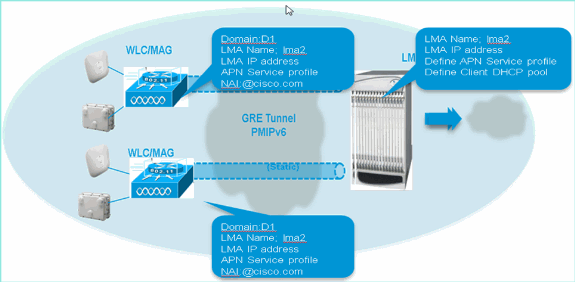
Components Used
The information in this document is based on these software and hardware versions:
-
MAG PMIPv6 on WLC 5508
-
WLC software 7.3
-
Catalyst switch
-
LMA simulator (ASR5k)
-
AP3600
-
Client devices (Laptop, iPhone and iPad)
-
DHCP server
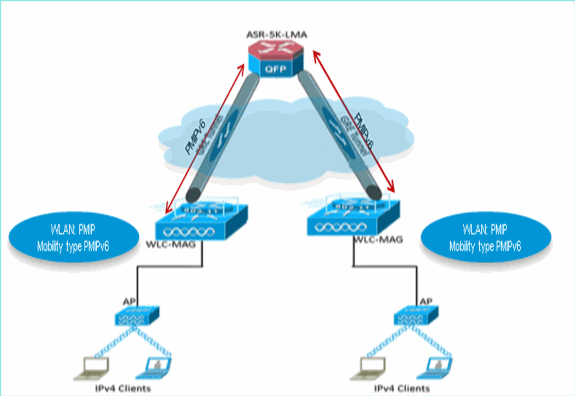
The information in this document was created from the devices in a specific lab environment. All of the devices used in this document started with a cleared (default) configuration. If your network is live, make sure that you understand the potential impact of any command.
Conventions
Refer to Cisco Technical Tips Conventions for more information on document conventions.
MAG - PMIPv6 feature support on WLC – (Release 7.3)
-
The MAG - PMIPv6 Feature is supported on WLC 5508, WSIM2 and WLC 8500 platforms.
-
WLC to support connectivity with up to 10 LMAs.
-
WLC to support the same number of PMIPv6 clients as supported by a base WLC type on WLC 5508 – 7K sessions, WSIM2 – 15K sessions and WLC 8510 – 40K sessions.
-
WLC to support “Simple IP”* or PMIPv6 WLAN (Simple IP is currently supported, such as IPv4 and/or IPv6 clients on a WLAN).
-
PMIPv6 WLAN supports IPv4 Clients only in release 7.3.
-
WLC to support IPv4 PMIPv6 GRE Tunnels only to LMA in release 7.3. One static tunnel per LMA (Management IP to LMA IP)
PMIPv6 provisioning on LMA simulator
All WLC (PMIPv6 – MAG) to LMA testing was done on an ASR5k – LMA simulator using these parameters:
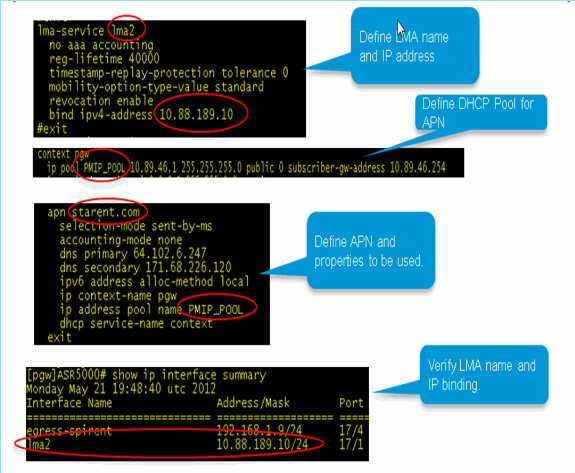
MAG-PMIPv6 Provisioning on WLC GUI
Once all parameters from above are known, provisioning of the MAG – PMIPv6 can be done using the GUI interface on the WLC.
Complete these steps to guide you through the provisioning steps on the WLC GUI:
-
Define Mobility Domain that this WLC- MAG will be a part of.
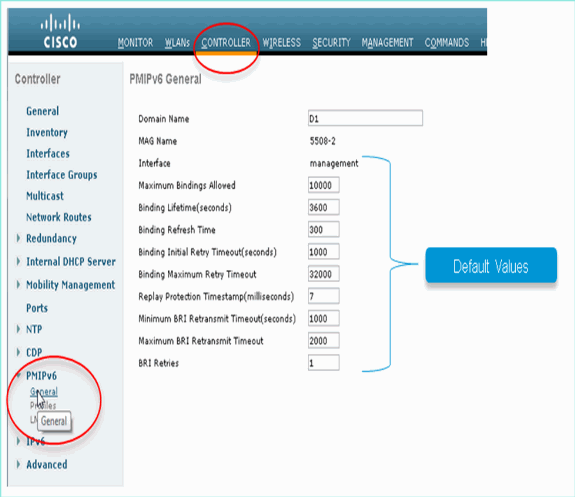
-
Provision LMA name and IP address:
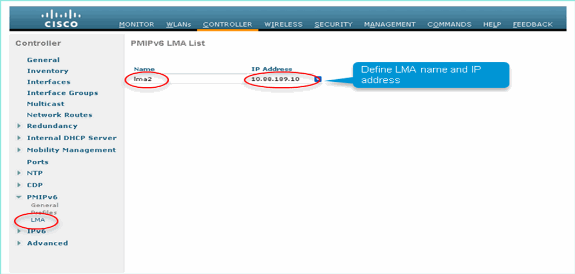
Once the above is done, the static PMIPv6 GRE tunnel between the WLC-MAG and LMA will be up.
-
In order to verify, login to the WLC and issue this command:
debugfastpath dump tun4db
This command shows the GRE tunnel status for the WLC-MAG and LMA.
Output should appear as:
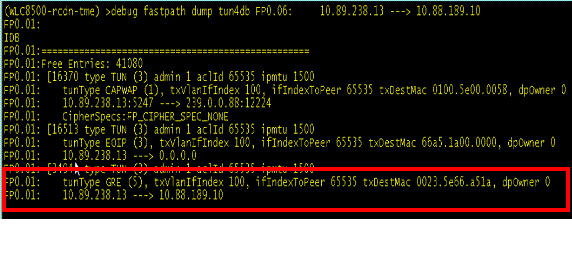
-
Define PMIPv6 profile to be associated to a WLAN on the WLC.
These parameters are required:
-
NAI
-
APN, profile to be associated to on LMA
-
LMA to be used
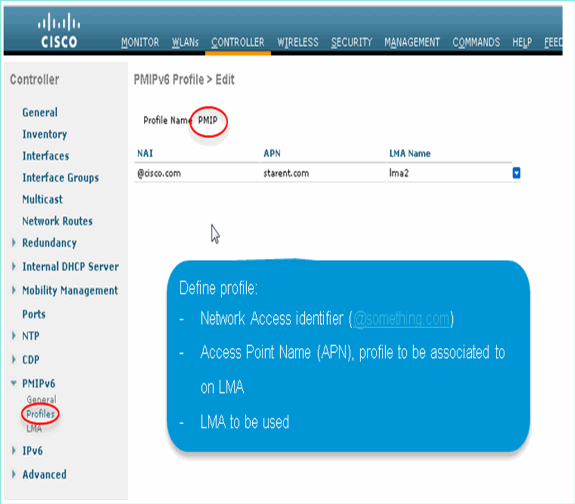
-
-
Assign the PMIPv6 profile defined above to a WLAN that you want to allow PMIPv6 based mobility on.
Once a WLAN is associated with a PMIPv6 profile, all clients IP allocation is handled via WLC – MAG signaling to the LMA. The MAG will act as the proxy for the client.
PMIPv6 APN settings on LMA will override WLAN Dynamic interface setting (if present).
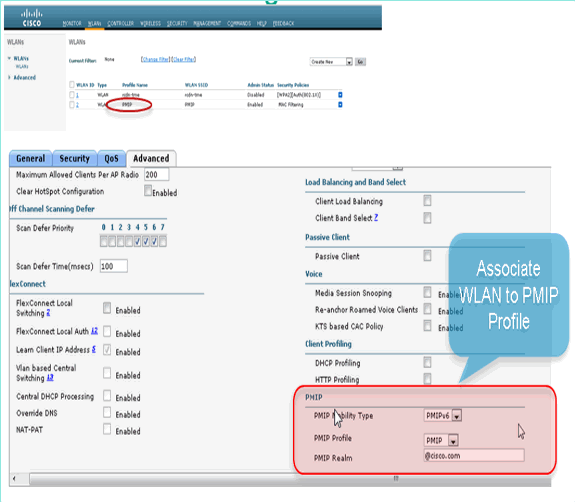
Monitoring and verifying PMIPv6 client connectivity on WLC
Once the above configurations have been done, any client connecting to a WLAN associated with a PMIPv6 profile will now be a part on the PMIPv6 Mobility Domain.
In order to verify client parameters, go to Monitor\Client on the WLC:
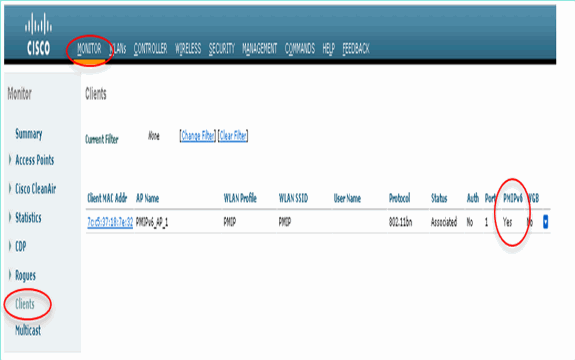
Select Client to view more details.
Note: Even though the client is associated to a Dynamic interface with VLAN 16 subnet, the client is obtaining the IP from the pool defined under the APN in the LMA.
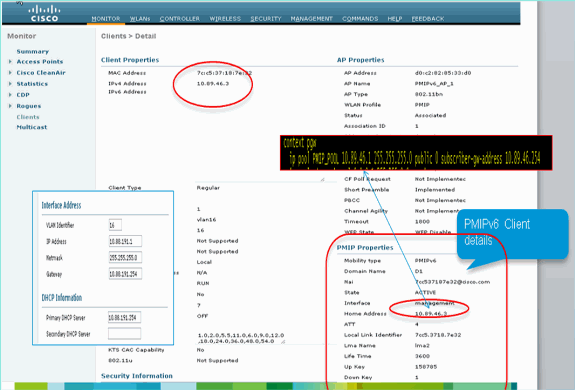
Additional CLI and Debug info
In order to configure MAG – PMIPv6 via the WLC CLI, use these commands:
Config Commands:
configpmipv6 ? domain Configure Domain addAdd to domain deletedelete an entity mag Proxy mobility MAG configuration configpmipv6 domain D1 configMAG - PMIPv6 ? ipv4-address ? configpmipv6 add profile ?
MAG- PMIPv6 show commands available through WLC CLI
show commands:
-
(WiSM-slot6-1) >show MAG - PMIPv6 bindings—This command is used to check the MN(Client) bindings in the LMA at MAG.

-
(WiSM-slot6-1) >show MAG - PMIPv6 globals—This command shows the global config values and the LMAs configured.

-
(WiSM-slot6-1) >show pmipv6 profile summary—This command shows the profiles created and to which WLANs it is mapped.

-
(WiSM-slot6-1) >show pmipv6 domain D1 profile PMIP—This command shows the details of each profile.

-
(WiSM-slot6-1) >debug fastpath dump tun4db—This command shows the GRE Tunnel status for the WLC-MAG and LMA.
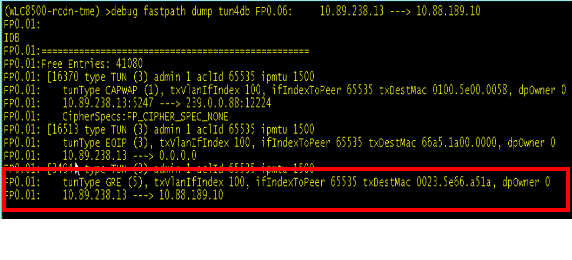
MAG – PMIPv6 Debug commands available on WLC
These debug commands are available for MAG-PMIPv6 debugging on the WLC:
Note: Depending on the need of the logs, you can enable different debug entities.

Related Information
Revision History
| Revision | Publish Date | Comments |
|---|---|---|
1.0 |
03-Sep-2012 |
Initial Release |
Contact Cisco
- Open a Support Case

- (Requires a Cisco Service Contract)










 Feedback
Feedback